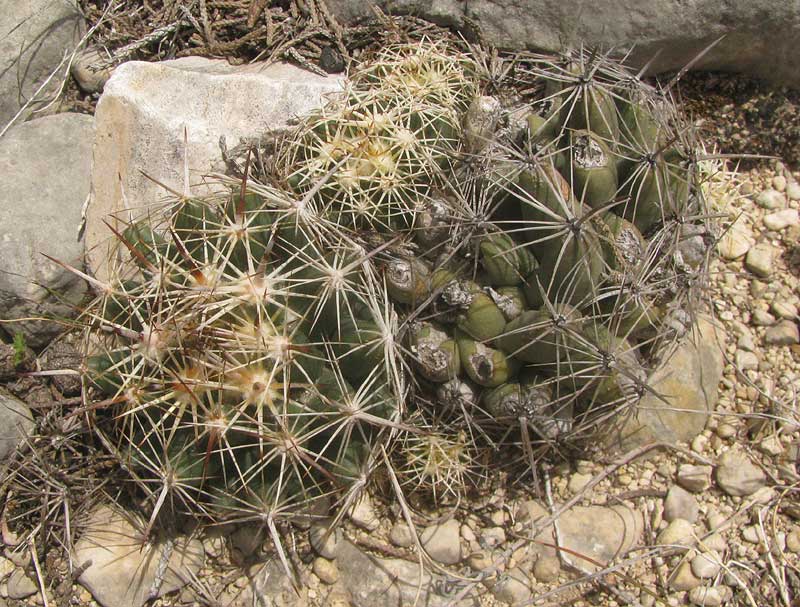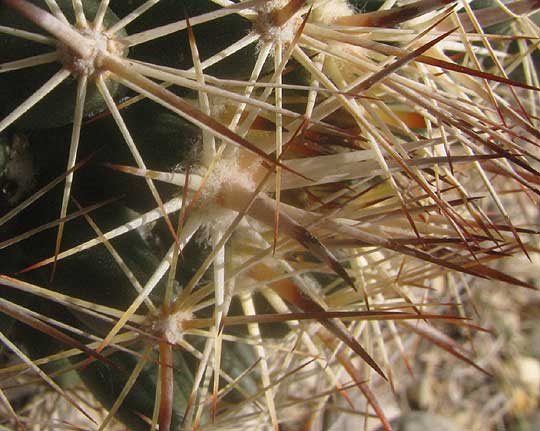Excerpts from Jim Conrad's
Naturalist Newsletter

from the April 20, 2014 Newsletter issued from the Frio Canyon Nature Education Center in the valley of the Dry Frio River in northern Uvalde County, southwestern Texas, on the southern border of the Edwards Plateau; elevation ~1750m (~5750 ft); N29.62°, W99.86°; USA
GROOVED NIPPLE CACTUS
Neighbor Phred had told me that in the local cobblestone fields of the floodplain of the little Dry Frio River there used to be little cacti shaped like bunches of green jalapeño peppers joined at their stems. With their rounded bottoms pointing outward, each bottom was equipped with numerous stiff spines. Such cacti often are called nipple cacti.
So far I'd not seen any nipple cacti here and I'd figured that local people had dug them all up for potting, or maybe the occasional attempts to exterminate our Ashe Junipers had squashed or burnt them all. However, this week a small cluster turned up on the cobblestone floodplain, shown above.
The population was about the size of a saucer. In the picture there's an older body on the right, a younger one at the left, and quite young ones emerging with pale spines in the center, below and above. A close-up of the spines atop a "nipple" appears below:

In that picture, notice that each spine cluster consists of a single thick-based spine emerging from the center of a cottony zone at the nipples top, surrounded by about a dozen smaller, outward-radiating spines.
*UPDATE: I'd assumed that this was one of numerous species of Mammillaria. However, in 2024 when the above pictures were uploaded to iNaturalist, user "wolfgangb" in Germany, a cactus specialist, recognized that it was what's often known as the Grooved Nipple Cactus, CORYPHANTHA SULCATA, thus not a Mammillaria at all. I'd not seen the groove, and still don't, but grooves are important, separating Mammillariaspecies from those of Coryphantha.
Coryphantha sulcata mainly occurs in central Texas and extends a little into northeastern Mexico.